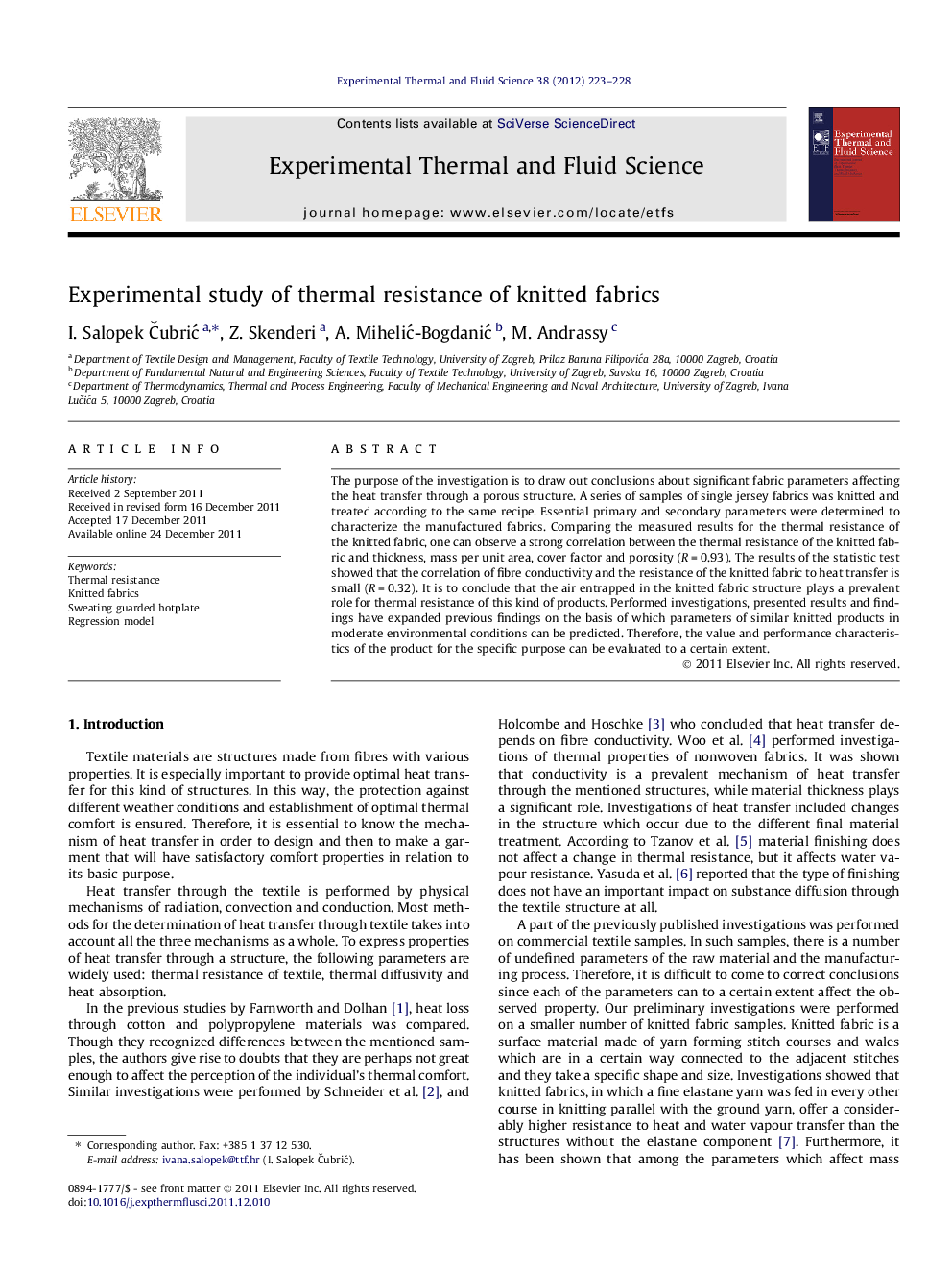| Article ID | Journal | Published Year | Pages | File Type |
|---|---|---|---|---|
| 651787 | Experimental Thermal and Fluid Science | 2012 | 6 Pages |
The purpose of the investigation is to draw out conclusions about significant fabric parameters affecting the heat transfer through a porous structure. A series of samples of single jersey fabrics was knitted and treated according to the same recipe. Essential primary and secondary parameters were determined to characterize the manufactured fabrics. Comparing the measured results for the thermal resistance of the knitted fabric, one can observe a strong correlation between the thermal resistance of the knitted fabric and thickness, mass per unit area, cover factor and porosity (R = 0.93). The results of the statistic test showed that the correlation of fibre conductivity and the resistance of the knitted fabric to heat transfer is small (R = 0.32). It is to conclude that the air entrapped in the knitted fabric structure plays a prevalent role for thermal resistance of this kind of products. Performed investigations, presented results and findings have expanded previous findings on the basis of which parameters of similar knitted products in moderate environmental conditions can be predicted. Therefore, the value and performance characteristics of the product for the specific purpose can be evaluated to a certain extent.
► Parameters affecting heat transfer through knitted structures were investigated. ► Weak correlation between heat resistance and fibre conductivity. ► Strong correlation with thickness, mass, cover factor and porosity. ► Prevalent role for thermal resistance – air entrapped in the structure.
